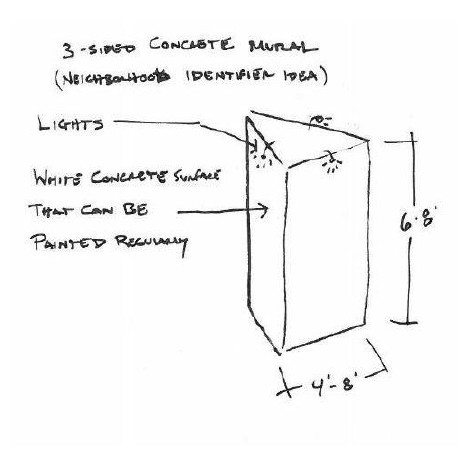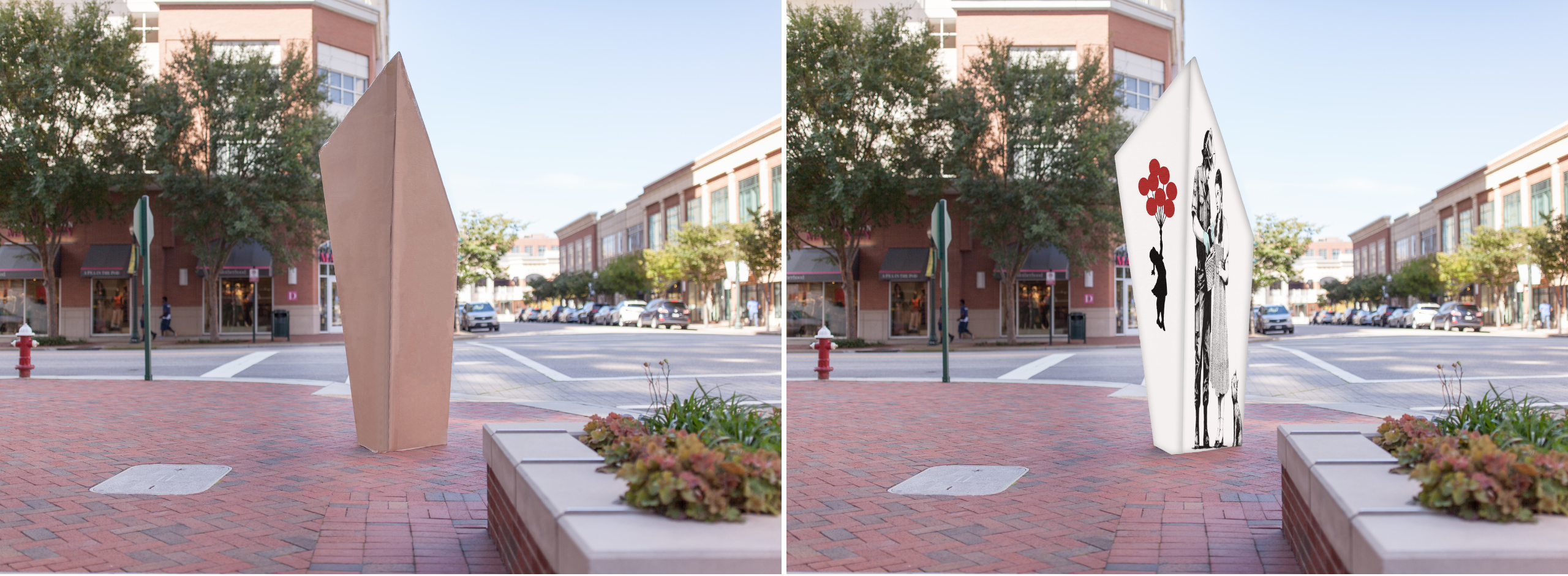5 Questions with an Expert: Erin Horton on Designing the ViBe District Neighborhood Identifiers
 Erin Horton, Landscape Architecture and Planning Practice Lead, discusses the creative journey for the ViBe District’s neighborhood markers.
Erin Horton, Landscape Architecture and Planning Practice Lead, discusses the creative journey for the ViBe District’s neighborhood markers.
Just a few streets from the oceanfront, the ViBe District is an evolving canvas for arts and culture. Born from the need for more public spaces in the Oceanfront area, the neighborhood is home to unique businesses, parks, and restaurants that embody a vibrant and artistic charm. Clark Nexsen has worked on several projects in this growing district, including the colorful intersections at 19th street and the 18th street parklet that hosts weekly neighborhood markets and events. We caught up with Erin, who shared insights on how Clark Nexsen transformed a simple concept into beautiful landmarks that have defined Virginia Beach’s creative scene.
1. Could you walk us through the design process and discuss how the shape evolved as the project progressed?

An early sketch of the neighborhood identifiers, with rough dimensions and early ideas.
The ViBe District of Virginia Beach was looking to strengthen its neighborhood identity with a signature element throughout the community that provided a sense of arrival and belonging. We collaborated with Emily Archer, City of Virginia Beach Economic Development Deputy Director, who shared a sketch of what she called a neighborhood identifier. The sketch was of a concrete plinth, and she envisioned creating something that could be an evolving art canvas. We loved the idea but wanted to explore alternative materials better suited for the local environment. Our search led us to picking aluminum as the primary material for the identifiers. Lightweight, durable, and naturally resistant to corrosion, it’s the perfect choice to deal with the elements.
To address scaling concerns, we built a full-scale cardboard mockup in our office. The original design was shorter and wider, but we determined a taller, more slender shape would create better visibility and presence. We placed the mockup on the street and photographed it from numerous angles, approaching it to determine the optimal scale. Using Adobe Photoshop, we edited these photos to visualize the structure with artwork and confirm the proper dimensions. The city loved it, and the process evolved from there into what you see today.

Clark Nexsen built a full-sized, cardboard mockup of the neighborhood identifiers, which helped the team determine the right angles and scale for the project.
2. What are some of the factors you considered when designing these neighborhood identifiers?
Our design process addressed numerous environmental and practical factors beyond the element’s basic form and dimensions. The ViBe District’s proximity to the Oceanfront meant that the neighborhood identifiers had to withstand salt, air, and rain without deteriorating. We carefully coordinated each identifier’s location streetside to remain cohesive among existing elements, like light poles, traffic signals, and other utilities.
Through 3D modeling, we determined an angular design that would best utilize the sun’s changing position throughout the day. This attention to light defined the structure’s final form, while our added lighting elements ensured the markers had a strong nighttime presence. To fulfill the neighborhood identifier’s primary purpose, visibility and impact at varying distances guided our decisions. We created a design that stands out for pedestrians and drivers alike, ensuring that it was a non-distraction for drivers while being instantly recognizable as a ViBe District marker.
3. What was it like working on a project so heavily influenced by art and balancing these elements as canvases for art and functionality?
Working on a project so heavily influenced by art was both challenging and inspiring. We were all inspired by the art in the ViBe District, such as the murals along the fence line of 18th Street. Going down there and walking around to get a feel for how the spaces were utilized helped us chart our path for creating these neighborhood identifiers. Our team had previously integrated art with landscape architecture in the art district of Cary, NC, for a streetscape project. There, we designed musical instrument-inspired site furnishings, decorative paver ‘rooms’ with space for outdoor dining, and comprehensive landscape planting. Like the ViBe District, they host many street festivals, so that experience provided valuable insights for balancing artistic expression with functionality in Virginia Beach.
4. Were there any challenges you encountered during the design process?
While working on this project, we encountered a few challenges that required practical solutions. One of our biggest was determining the right scale. When we tried designing in 3D on the computer, it became clear that we weren’t going to determine the right scale without building a physical mockup. This hands-on approach helped us determine the correct scaling. Placement was another challenge that we overcame. Each location had existing infrastructure that we needed to work around, so we focused on placing these identifiers in locations that gave them maximum visibility while still harmonizing with their surroundings.
5. What part of this project are you most proud of?
I am proud to be a part of creating a space that draws in so many different types of people. It showcases the incredible local talent that we have here in Virginia Beach and creates a destination, a sense of place, and a place to congregate. Living just minutes away, I’ve had the privilege of watching the ViBe District transform over time. I regularly visit with my family for coffee, markets, or events, and it’s been meaningful to witness how the community has embraced these identifiers and how the district has blossomed from the grassroots efforts alongside this project. Being a part of that evolution is very special. I feel grateful to have had a small role in creating something so significant for the ViBe District, and I hope that we’re able to delve into this realm again someday because it’s truly fascinating and inspiring to see how these markers have taken on a life of their own.
Erin Horton, PLA, ASLA, LEED AP BD+C, is a Landscape Architecture and Planning Practice Lead with more than 20 years of experience, frequently working with clients on high-profile projects. She views each landscape as an opportunity to enhance the human experience, connecting communal spaces from interior to exterior. To learn more about the ViBe District project or to speak with Erin, please call 757.455.5800 or email ehorton@clarknexsen.com
